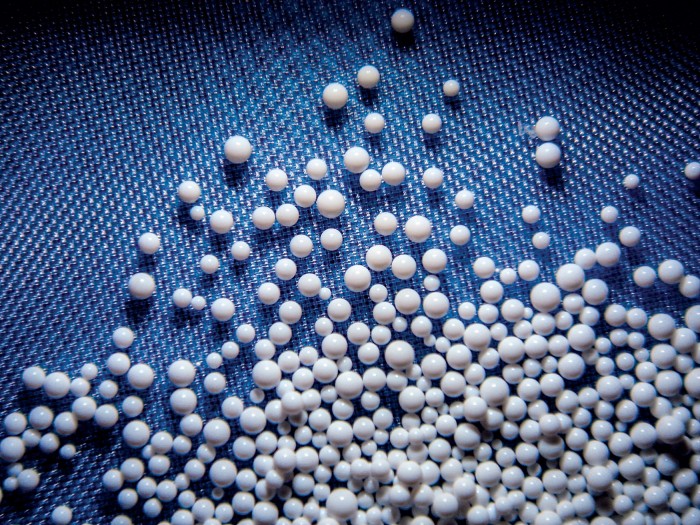Advertisement
Grab your lab coat. Let's get started
Welcome!
Welcome!
Create an account below to get 6 C&EN articles per month, receive newsletters and more - all free.
It seems this is your first time logging in online. Please enter the following information to continue.
As an ACS member you automatically get access to this site. All we need is few more details to create your reading experience.
Not you? Sign in with a different account.
Not you? Sign in with a different account.
ERROR 1
ERROR 1
ERROR 2
ERROR 2
ERROR 2
ERROR 2
ERROR 2
Password and Confirm password must match.
If you have an ACS member number, please enter it here so we can link this account to your membership. (optional)
ERROR 2
ACS values your privacy. By submitting your information, you are gaining access to C&EN and subscribing to our weekly newsletter. We use the information you provide to make your reading experience better, and we will never sell your data to third party members.
Water
COF filters out small organic molecules from water
Porous materials might help wastewater treatment plants remove pharmaceuticals from sewage
by Katharine Sanderson, special to C&EN
March 30, 2018
| A version of this story appeared in
Volume 96, Issue 14

A new filter membrane based on a covalent organic framework (COF) could help clean up drug-laden wastewater (Angew. Chem. Int. Ed. 2018, DOI: 10.1002/anie.201802276).
The medicines we take often end up in sewage. Wastewater treatment plants struggle to remove these compounds before releasing water back into the environment. Scientists worry that when these molecules end up in the environment, they might contribute to the spread of antibiotic resistance or disrupt development in aquatic animals.
COFs are crystalline porous networks made from small organic elements covalently linked together. They are similar to metal-organic frameworks (MOFs), which are finding uses in hydrogen storage and catalysis. COFs have been used in similar applications, but Jürgen Caro of Leibniz University Hannover thought the materials could make good nanofilters.
In fact, the tunable pore sizes of COFs make them prime candidates for separation technologies. Caro and his team used a well known imine-based COF, called COF-LZU1, developed at Lanzhou University. The pores in COF-LZU1 are 1.8 nm in diameter, which is small enough to block most pharmaceutical molecules. Many drug compounds are bigger than 1.8 nm wide. Another advantage of this imine-based COF is its stability in water.
To create a filter from the COF, Caro and his team needed to make an ultrathin membrane that remained defect-free and stable. They did this by starting with porous ceramic alumina tubes that acted as supports. The team functionalized the alumina with 3-aminopropyltriethoxysilane and then 1,3,5-triformylbenzene (TFB). With these modifications, the researchers could grow the COF directly on the supports by condensing TFB and paraphenylenediamine. The final COF layer on the tubes was 400 nm thick.
The team tested the filter with five water samples, each containing a different colored dye serving as a surrogate for a pharmaceutical molecule. Each of the five samples came out colorless on the other side of the COF filter. The filter blocked 99.2% of methyl blue, which is about 2.36 by 1.74 nm in size. The filter didn’t fare as well for smaller dyes: It blocked less than 30% of methyl orange molecules, which are 1.13 by 0.42 nm.
Caro hopes the filter could remove drug molecules in the sewage at hospitals, where they are highly concentrated.
The filters are impressive, says Ying-Wei Yang at Jilin University. But he thinks it will be challenging to make the filters on a commercial scale. “The extremely high cost of the starting materials and the process of materials production will definitely limit the scale-up or pilot plant production,” he says. Yang would also like to see more data on the membrane’s stability to acidic and basic conditions seen in sewage.
Caro says he and his colleagues are looking to use robots to scale up production. He is thinking about a using a dipping technique, building up the filters layer by layer, or spraying the COF starting material using special nozzles.





Join the conversation
Contact the reporter
Submit a Letter to the Editor for publication
Engage with us on Twitter